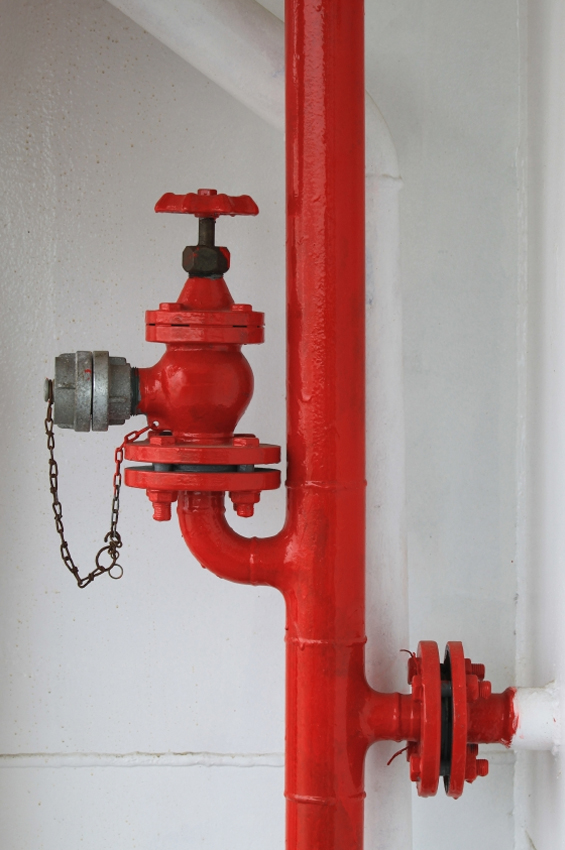Sprinkler Fitters and Mesothelioma
Mesothelioma Sparks 4-Alarm Blazes Within Sprinkler Fitters
You’re a sprinkler fitter. You put together sprinkler systems that protect buildings against the outbreak of fire.
But nothing protects you from the asbestos you encounter as you install those sprinkler systems.
As a result, the asbestos you come into contact with puts you at risk of developing mesothelioma. Your risk of getting mesothelioma is moderate to high.
The asbestos creating this risk for you is all around your work environment. Here are some examples:
- Insulated pipes
- Ceiling tiles
- Pumps
- Attic or between-floors insulation
Asbestos is a fire-protection specialist’s friend — except when it isn’t.
It isn’t your friend when you inhale or swallow it. But that can only happen if you’re around asbestos while it’s floating in the air.
Asbestos gets in the air because it has a habit of breaking free from whatever material contains it.
Asbestos Contained in Building Materials

The mineral is contained in many different types of materials and finished products used in the construction of homes, offices, institutional buildings and plants.
Asbestos is added to those materials and products for the same reason you install sprinklers — to stop fire dead in its tracks. Asbestos turns out to be a terrific flameproofing agent.
It also has tremendous insulation properties, so things like steam pipes and furnaces that are hot on the inside stay cool on the outside when coated with or blanketed by asbestos.
Beyond that, asbestos mixed with wet concrete makes the concrete lighter, stronger and more durable.
Asbestos was used in fire-sprinkler systems and other aspects of construction up until the early 1980s. That was when the government told construction materials makers to stop using it.
Stopping was hard because asbestos worked so well and was so cheap and easy to buy. But they had to give it up.
And so today you don’t run into much asbestos – unless you’re working a job at a place built prior to the 1980s.
In that case, asbestos could be everywhere just waiting to cause you problems while you install new sprinklers or maintain old ones.
Asbestos in the Air
The problem begins when asbestos is dislodged from the material containing it.
This happens if you hammer the material, cut it, drill into it, put it in a grinder, run a polisher over it, or simply kick it by accident as you walk past.
Any of these actions — and more — can send dislodged particles of asbestos into the air. The particles are small. Incredibly small.
Because they’re that small, they float like dust and can stay in the air a long time before settling.
If asbestos is in the air of a room you happen to be working in, you probably will breathe or swallow some of it unless you wear proper protective equipment.
Once you do, the particles stay inside your body for the next decade or two or three or four.
During that time, they do very bad things to the genetic composition of the healthy cells lining your lungs or your abdomen or even your heart.
Mesothelioma cancer cells emerge when the trapped asbestos completes its vile work.
Unions Denounce Mesothelioma
As a sprinkler fitter, perhaps you belong to the United Association — the Union of Plumbers, Fitters, Welders and HVAC Service Techs. The UA is concerned about the effects of asbestos on its members who come into contact with the mineral.
The UA has in place education programs seeking to equip members to be safe on the job. The safer you are, the lower your risk of developing mesothelioma.
Contact the UA today for information about its asbestos safety instruction. Learn what you can do to be protected.
The UA can also help guide your next moves should it turn out that mesothelioma is at your very door. Talk to the union about that as well.
